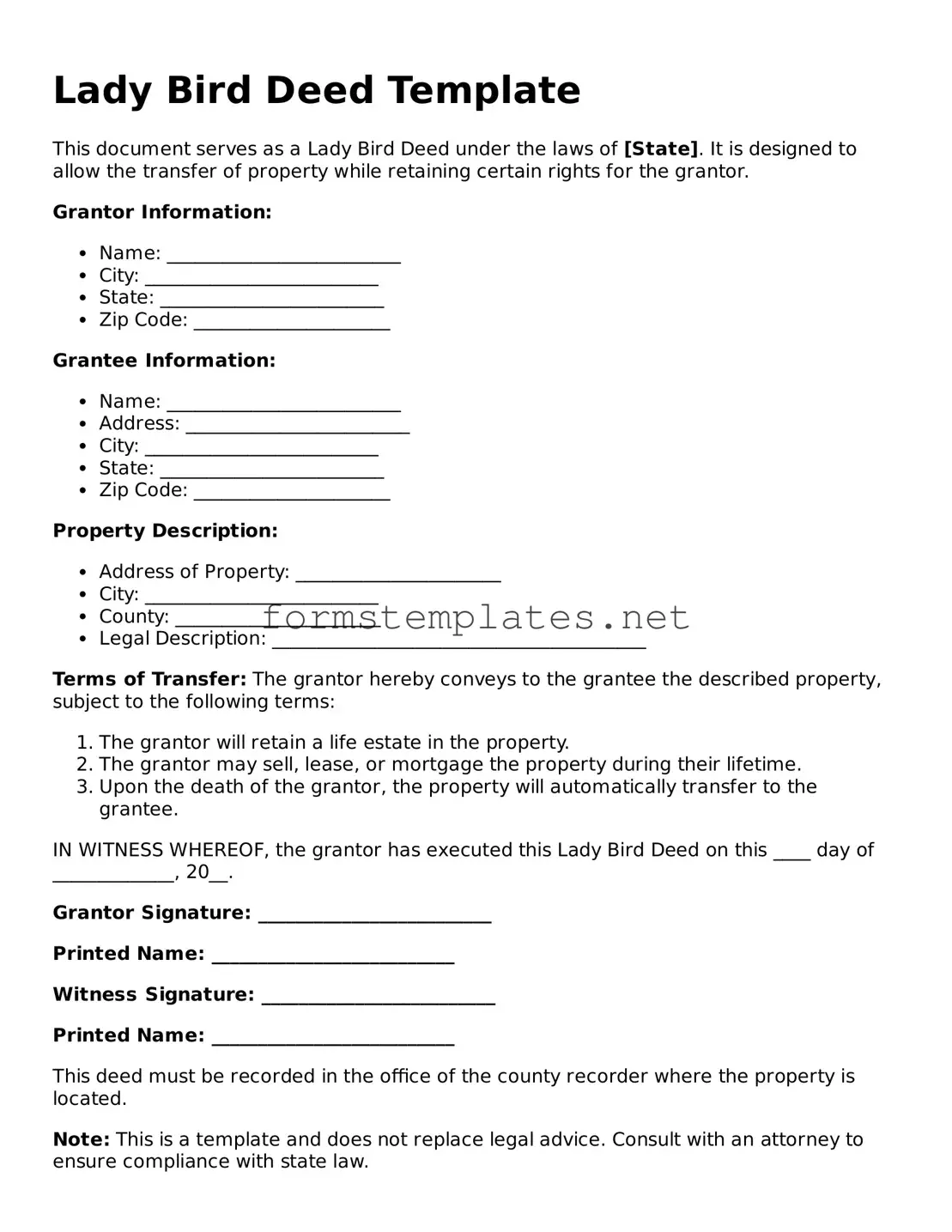Lady Bird Deed Template
This document serves as a Lady Bird Deed under the laws of [State]. It is designed to allow the transfer of property while retaining certain rights for the grantor.
Grantor Information:
- Name: _________________________
- City: _________________________
- State: ________________________
- Zip Code: _____________________
Grantee Information:
- Name: _________________________
- Address: ________________________
- City: _________________________
- State: ________________________
- Zip Code: _____________________
Property Description:
- Address of Property: ______________________
- City: _________________________
- County: ______________________
- Legal Description: ________________________________________
Terms of Transfer: The grantor hereby conveys to the grantee the described property, subject to the following terms:
- The grantor will retain a life estate in the property.
- The grantor may sell, lease, or mortgage the property during their lifetime.
- Upon the death of the grantor, the property will automatically transfer to the grantee.
IN WITNESS WHEREOF, the grantor has executed this Lady Bird Deed on this ____ day of _____________, 20__.
Grantor Signature: _________________________
Printed Name: __________________________
Witness Signature: _________________________
Printed Name: __________________________
This deed must be recorded in the office of the county recorder where the property is located.
Note: This is a template and does not replace legal advice. Consult with an attorney to ensure compliance with state law.
